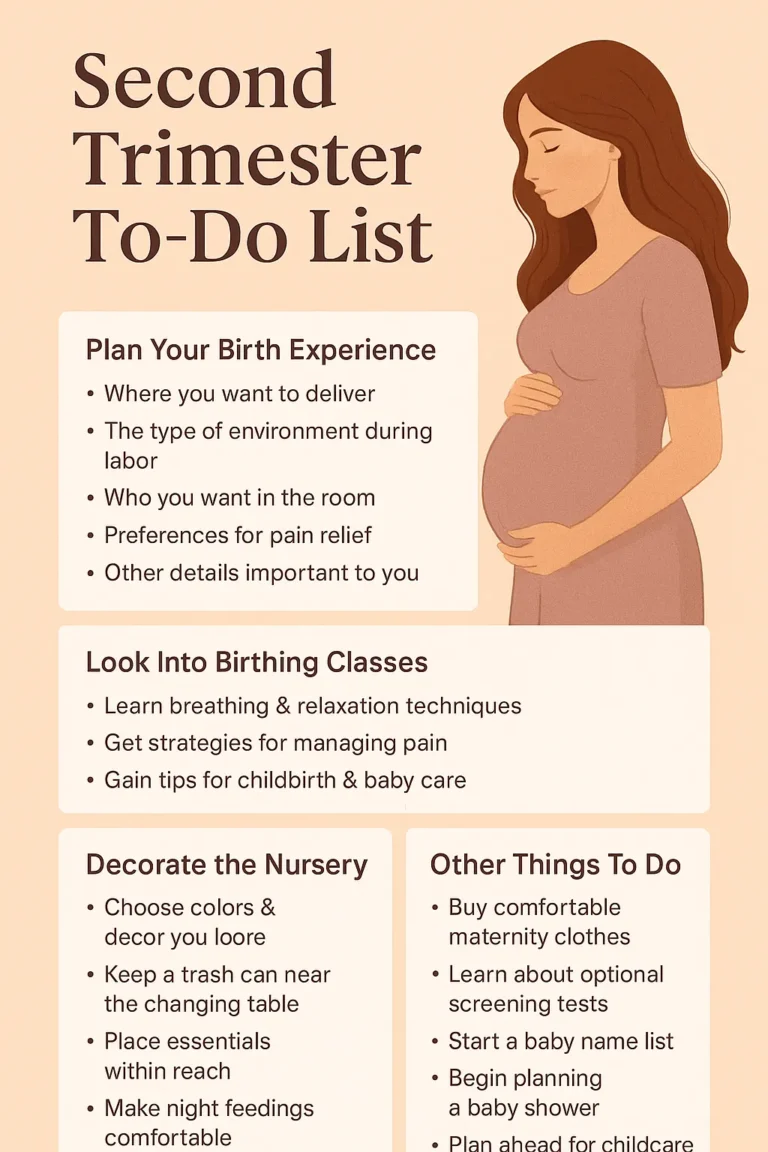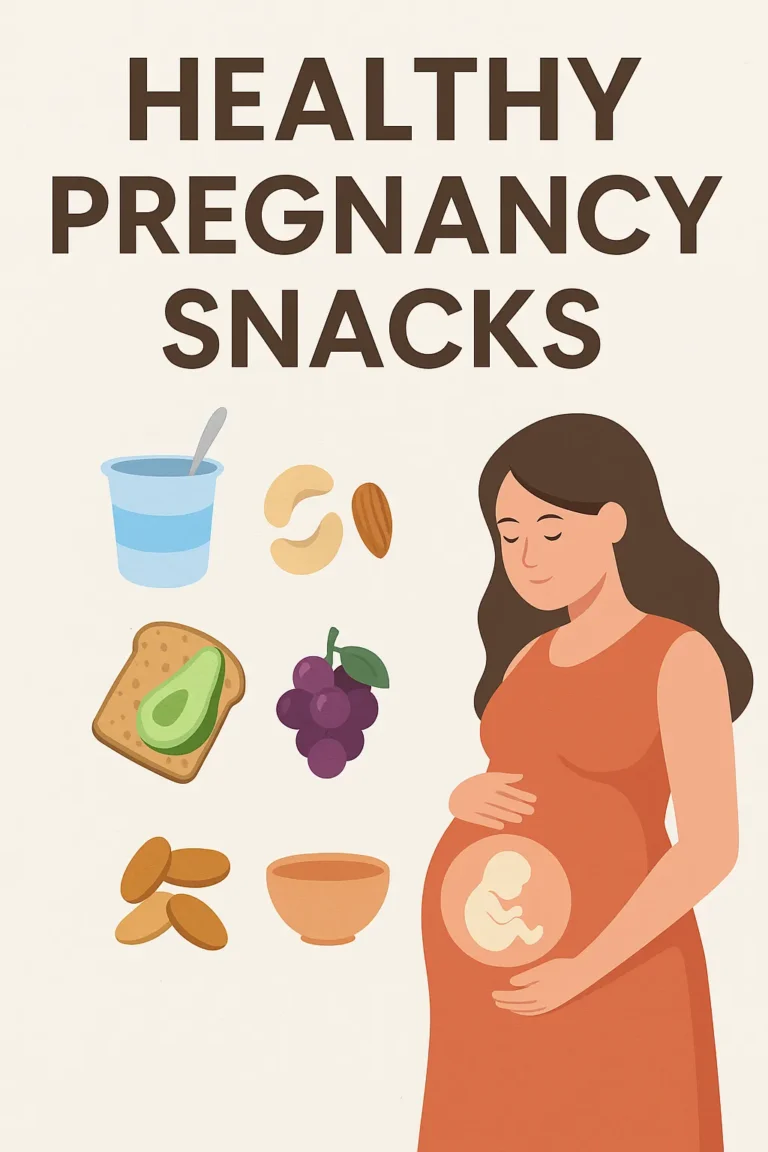Constipation During Pregnancy – 10 Remedies & Tips to Start Pooping
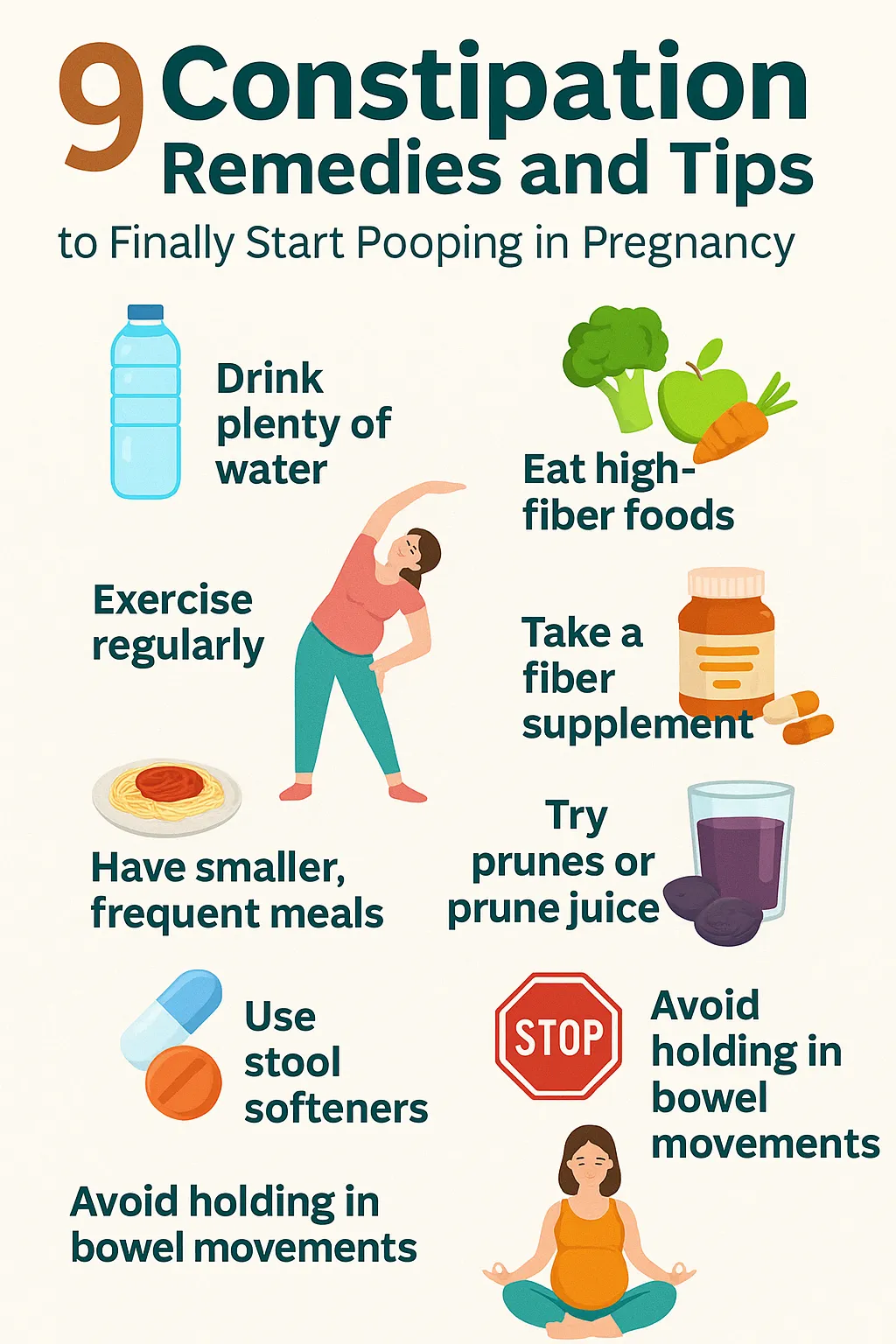
Pregnancy changes so many things in the body, and digestion is one of them. Constipation is one of the most common issues expectant mothers face, especially in the later months.
Studies show that almost 40% of pregnant women experience constipation at some stage, so if you’re going through it, you’re definitely not alone.
I still remember when one of my close friends was expecting, she would often talk about how uncomfortable it felt to be “backed up.”
At first, she thought it was just her eating habits, but later she learned that pregnancy hormones slow down the digestive system.
That small detail helped her understand why even healthy foods didn’t always work the same way.
The good news? Constipation during pregnancy is manageable. With the right tips, daily habits, and a little patience, relief is possible.
In the next sections, we’ll look at the main reasons behind constipation in pregnancy and the most effective ways to ease it.
Causes of Constipation During Pregnancy
One of the main reasons behind constipation is the rise of progesterone, a pregnancy hormone. It relaxes the muscles in the body, including those in the intestines.
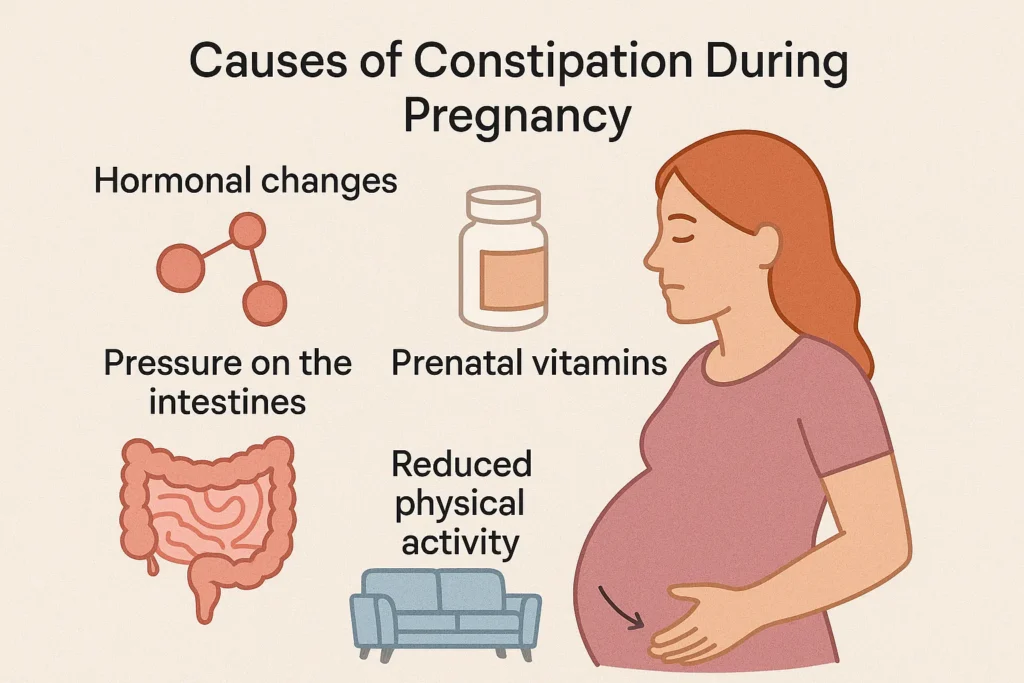
While this helps the body prepare for carrying a baby, it also slows down how quickly food moves through the digestive tract.
Another big factor is iron supplements. Many pregnant women take iron tablets to prevent anemia, but iron can make stools harder and more difficult to pass.
Some women notice the problem gets worse soon after starting their prenatal vitamins.
Later in pregnancy, the growing uterus also puts pressure on the intestines, leaving less space for food to move smoothly.
On top of that, less physical activity, dehydration, and dietary changes can all add up and make constipation more likely.
Symptoms and When to Worry
Mild constipation usually feels like hard or dry stools, fewer bowel movements in a week, and a general sense of not being fully relieved after using the bathroom.
Some women also notice bloating, mild cramps, or straining more than usual.
In most cases, constipation during pregnancy is uncomfortable but not dangerous. However, if you notice severe abdominal pain, blood in the stool, or constipation lasting more than a week, it’s important to call your doctor. These could be signs of hemorrhoids, an intestinal blockage, or another issue that needs medical attention.
Think of it this way: a little irregularity is common, but anything that feels extreme or keeps getting worse shouldn’t be ignored.
Safe Remedies for Constipation During Pregnancy
Constipation during pregnancy may be common, but that doesn’t mean you have to suffer through it silently. The good news is there are safe and effective ways to find relief. The key is focusing on small, consistent habits that support your digestion and keep things moving naturally. Here’s a detailed look at remedies that actually work.
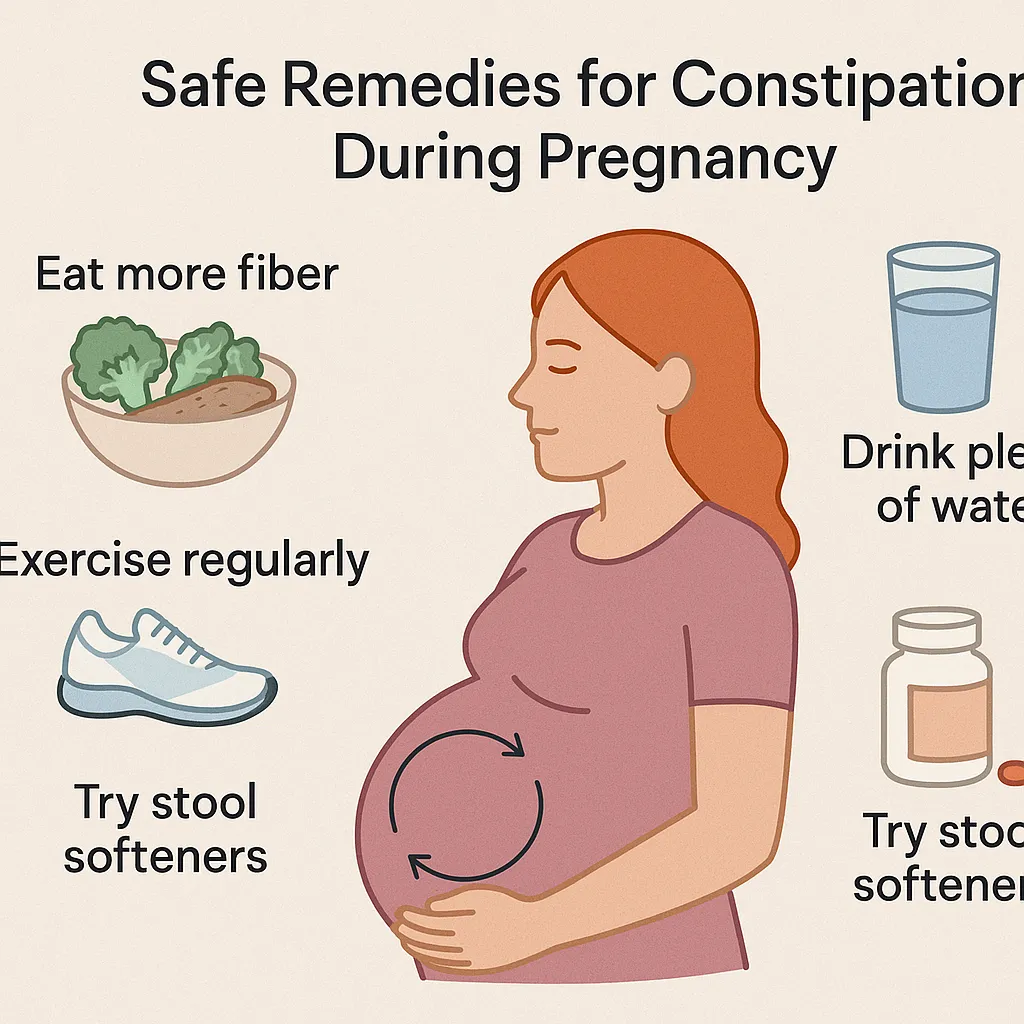
1. Stay Hydrated Throughout the Day
Water is your best friend when it comes to easing constipation. Without enough fluids, the stools become hard and difficult to pass. Aim for 8 to 12 glasses of water daily, but spread it out instead of drinking too much at once. Carrying a small water bottle with you can make this easier.
If plain water feels boring, try adding slices of lemon, cucumber, or a splash of fruit juice. Herbal teas such as chamomile or ginger tea are also safe in moderation and can soothe digestion while adding variety to your fluid intake. Just make sure you’re not relying heavily on caffeinated drinks, as too much caffeine can dehydrate you.
2. Add Fiber-Rich Foods to Your Diet
Fiber acts like a broom for your digestive system. It bulks up stool and makes it softer, so it can pass more easily. Aim for 25–30 grams of fiber daily.
Some excellent fiber-rich options include:
- Fruits: Apples (with skin), pears, oranges, kiwis, and berries
- Vegetables: Carrots, broccoli, spinach, zucchini, and peas
- Legumes: Lentils, chickpeas, black beans
- Whole grains: Oats, brown rice, whole wheat bread, quinoa
Prunes and figs are particularly well-known for their natural laxative effect, thanks to a type of sugar alcohol called sorbitol. Even two or three prunes a day can make a noticeable difference.
Tip: Introduce fiber gradually if you’re not used to it. Adding too much at once may cause gas or bloating. Balance it with enough water for the best results.
3. Move Your Body Gently
Pregnancy naturally slows down digestion, but physical activity helps stimulate the intestines. Even short, daily movements can keep things flowing.
Safe activities include:
- A 20–30 minute walk after meals
- Gentle prenatal yoga stretches (like cat-cow or seated twists)
- Light swimming sessions if available
- Simple household activities like tidying up or gardening
Always check with your doctor before starting any new routine, especially if your pregnancy is high-risk. The goal isn’t intense workouts — just enough movement to wake up your digestive system.
4. Create a Bathroom Routine
Your body loves routine. Try to set aside time each day to sit on the toilet, even if you don’t feel a strong urge. The best time is usually after meals when digestion is naturally active.
Sit with your feet flat on the ground, or use a small stool under your feet to raise your knees slightly above hip level. This position straightens the rectum and makes it easier to pass stool without straining.
5. Watch Out for Iron Supplements
Iron supplements are essential for many pregnant women, but they are a well-known trigger for constipation. If you’ve noticed constipation getting worse after starting iron tablets.
Sometimes switching to a different type of iron supplement or a lower dose can help. Some prenatal vitamins now come with added stool softeners or gentler forms of iron that are easier on the stomach.
6. Try Safe Stool Softeners (If Needed)
When natural methods aren’t enough, doctors may recommend stool softeners that are safe for pregnancy. These work by drawing water into the stool, making it easier to pass without straining.
Examples include docusate sodium (Colace) which is commonly prescribed. Avoid using stimulant laxatives unless specifically approved by your doctor, as they can cause cramping and may not be safe during pregnancy.
7. Small Diet Adjustments That Help
Certain small tweaks in your daily meals can also reduce constipation:
- Start the morning with a glass of warm water or warm lemon water to gently wake up your bowels.
- Eat smaller, more frequent meals instead of heavy ones, as this reduces pressure on your stomach and intestines.
- Limit processed foods high in refined flour and sugar, which tend to slow down digestion.
- Include probiotic-rich foods like yogurt or kefir, which support healthy gut bacteria.
8. Relax and Manage Stress
Stress can also affect your digestion. Pregnancy itself comes with enough worries, and stress hormones may slow down bowel movements further.
Deep breathing exercises, short naps, meditation, or even listening to calming music can help reduce stress levels. A relaxed body often digests food more smoothly.
Yoga and Gentle Practices for Constipation Relief During Pregnancy
While food and water play a big role, sometimes the body just needs a little movement and positioning help to get things going. Gentle yoga and massage techniques can encourage digestion and bring natural relief. These practices are simple, safe, and don’t require special equipment.
1. Gentle Belly Tapping (Under the Navel)
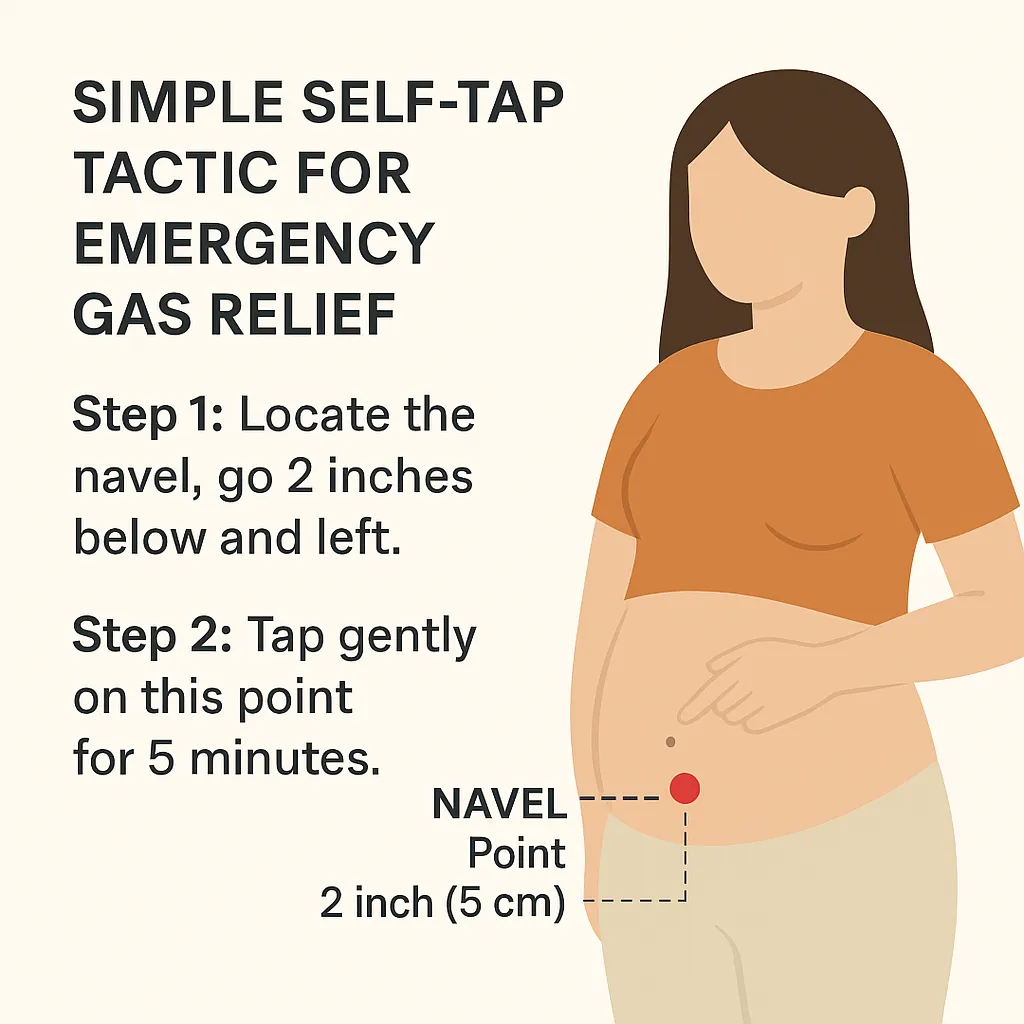
One practice many women don’t know about is light tapping just below the belly button, especially on the left lower side of the abdomen. This area is where the colon bends down toward the rectum. By gently tapping with your fingertips in this spot, you can stimulate the bowel and encourage movement.
How to do it:
- Sit or lie down in a comfortable position.
- With your fingers relaxed, gently tap in a rhythmic motion just below your navel on the left side.
- Continue for 1–2 minutes, breathing deeply.
This light stimulation can wake up the intestines and help relieve that heavy, blocked feeling.
2. Cat-Cow Stretch (Marjaryasana–Bitilasana)
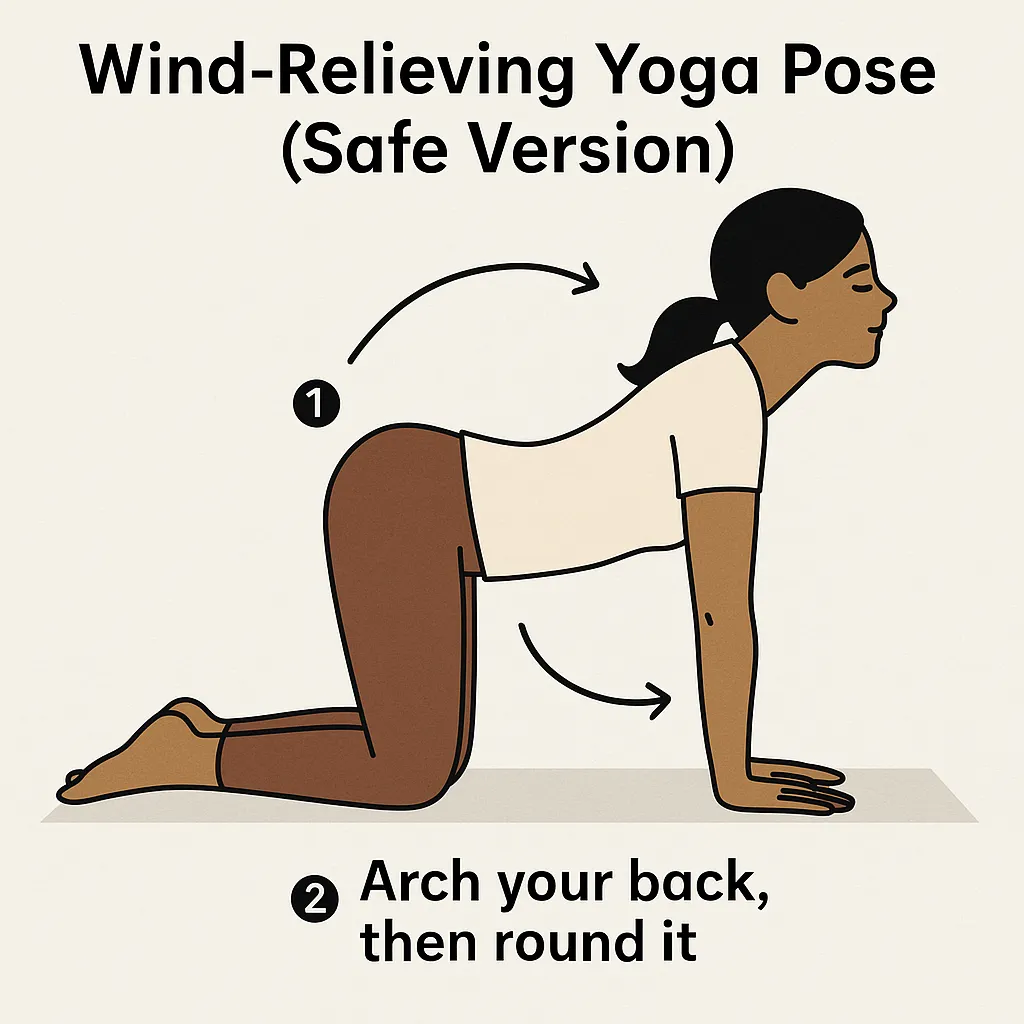
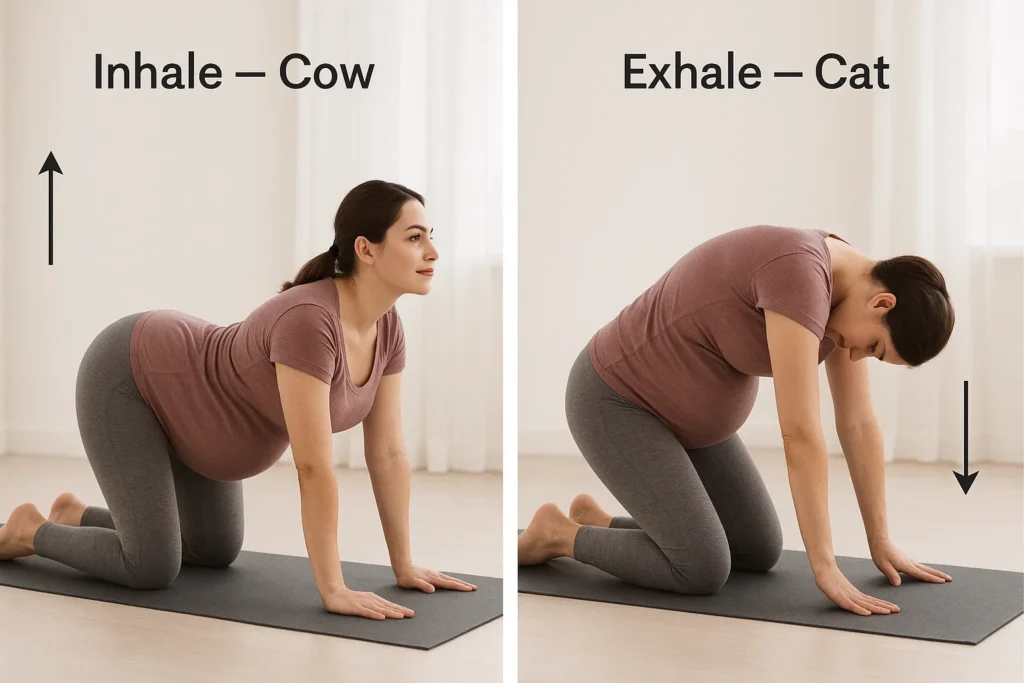
This classic yoga pose is very safe in pregnancy and works wonders for digestion. The gentle arching and rounding of the back massages the abdominal organs and stimulates the intestines.
How to do it:
- Start on your hands and knees with your wrists under your shoulders and knees under your hips.
- Inhale as you drop your belly down, lifting your head and tailbone (cow pose).
- Exhale as you round your spine upward, tucking your chin toward your chest (cat pose).
- Repeat slowly 8–10 times.
This stretch not only helps constipation but also eases back tension, which is common in pregnancy.
3. Seated Forward Bend (Modified)
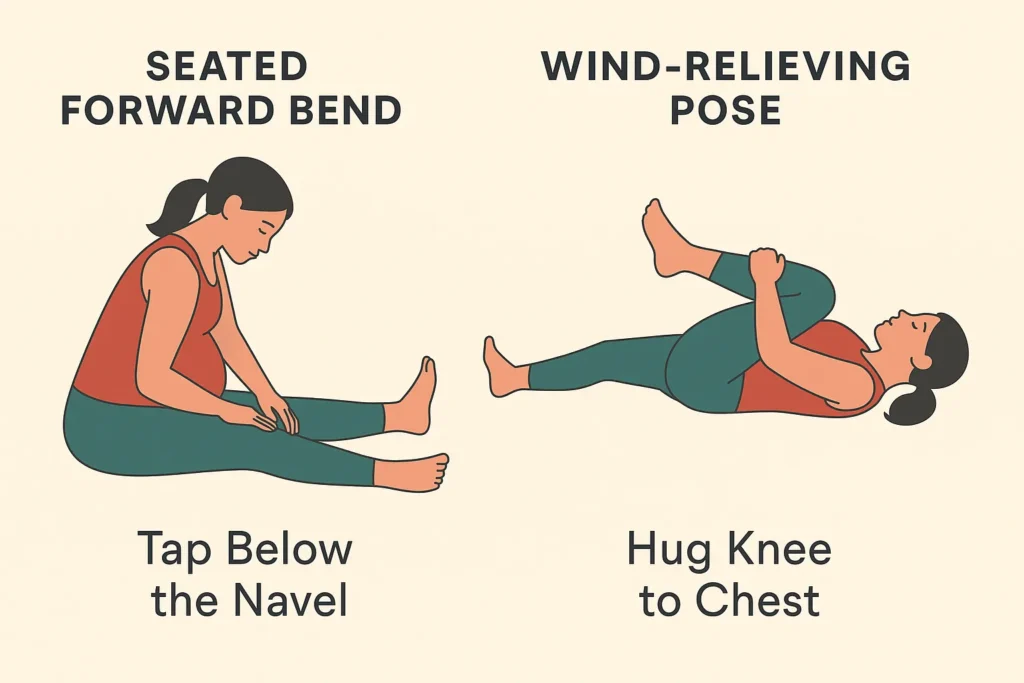
A gentle forward bend can put light pressure on the abdomen, encouraging the bowels to move. During pregnancy, it should always be modified for safety.
How to do it:
- Sit with legs crossed or extended comfortably.
- Inhale, lengthen your spine.
- Exhale, lean slightly forward, resting your hands on your knees or thighs.
- Hold for 5–10 breaths, keeping it gentle.
This posture calms the mind, supports digestion, and should feel relaxing rather than straining.
4. Malasana (Supported Squat)
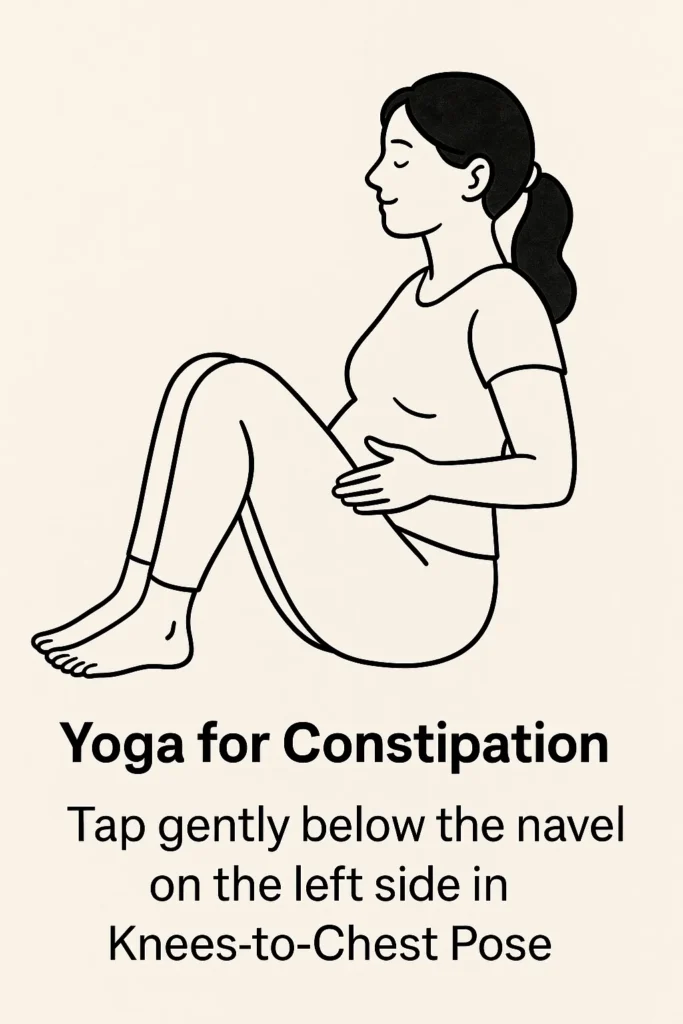
The squat position is a natural posture for bowel movement because it straightens the rectum and makes elimination easier. In pregnancy, it should be done with support for balance.
How to do it:
- Stand with feet slightly wider than hips.
- Slowly bend your knees into a squat, keeping your back straight.
- Rest your hands in prayer position at your chest, or hold onto a sturdy chair or wall for balance.
- Stay for 5–6 breaths, then gently rise back up.
If it feels too deep, place a yoga block or small stool under your hips for support.
5. Supine Wind-Relieving Pose
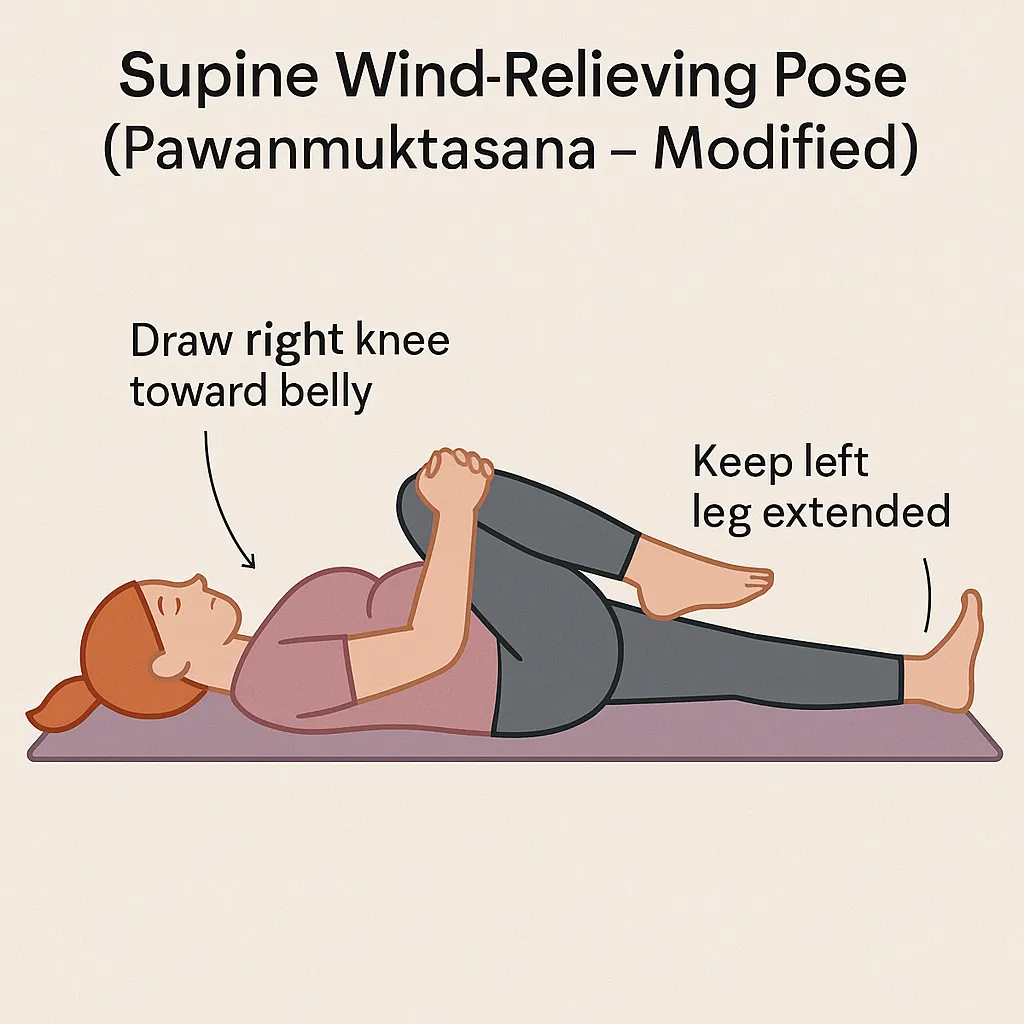
This pose is famous for releasing gas and stimulating the intestines. During pregnancy, it must be adjusted for comfort and safety.
How to do it:
- Lie on your back with knees bent and feet on the floor.
- Gently hug one knee toward your chest (not pressing too hard on the belly).
- Hold for 5 breaths, then switch sides.
- If comfortable, you can hug both knees slightly but keep the movement soft.
This exercise helps relieve bloating and constipation by gently massaging the colon.
6. Abdominal Massage with Circular Motions
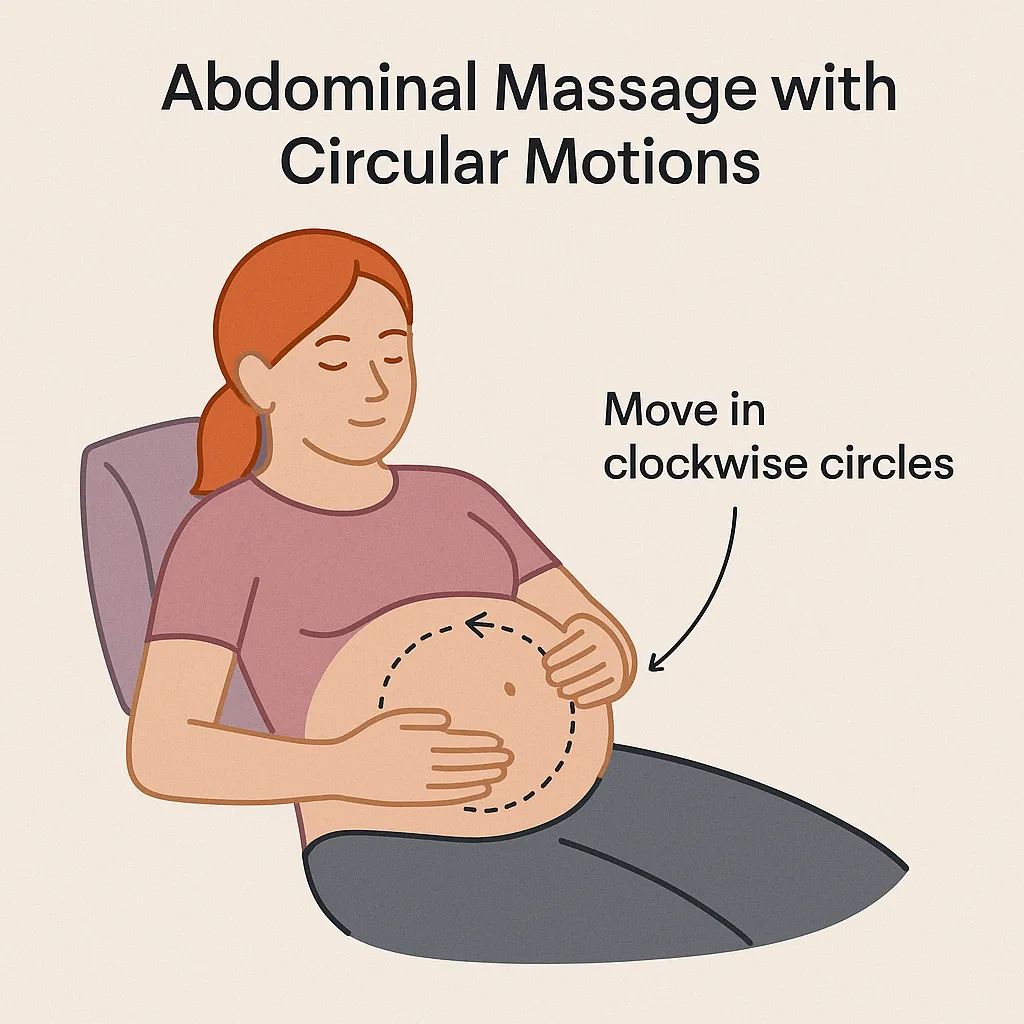
If yoga feels tiring, even a simple self-massage can help. Moving your hand in circular motions on the belly follows the natural direction of the colon.
How to do it:
- Lie down or sit back in a relaxed position.
- Place your hand on your abdomen.
- Move in slow, clockwise circles starting at the right lower side (where the colon begins) and ending on the left lower side (where stool exits).
- Continue for 2–3 minutes.
This helps stimulate peristalsis (the wave-like muscle movement in the intestines).

